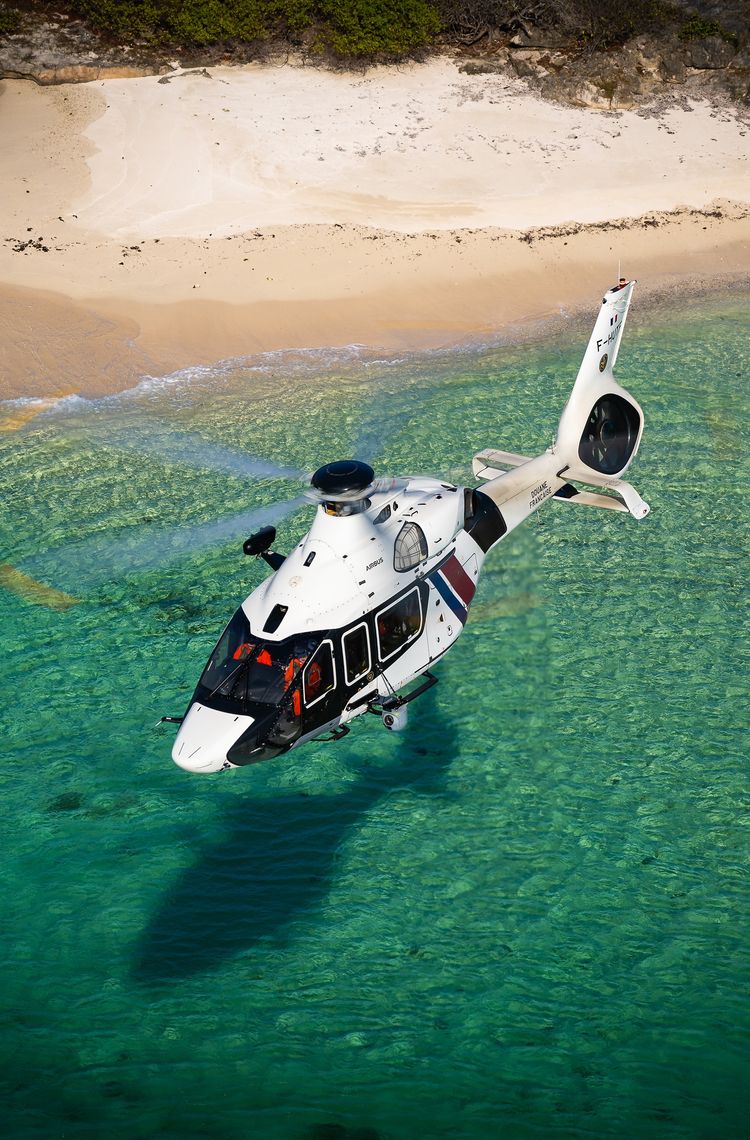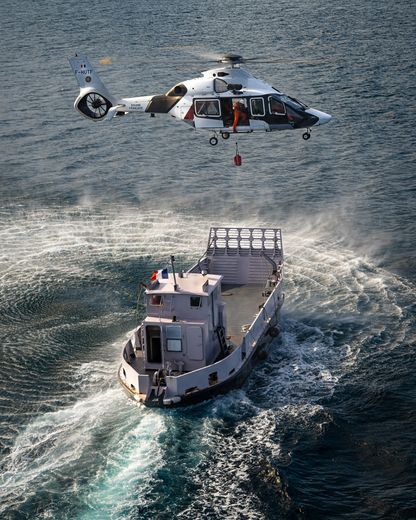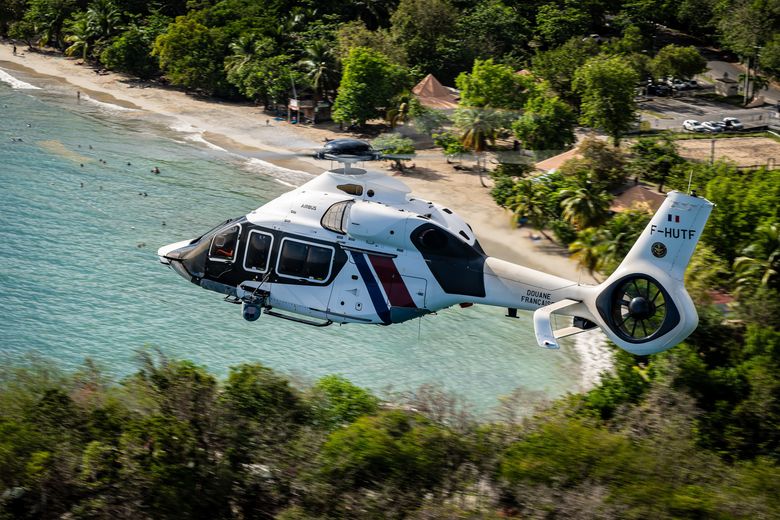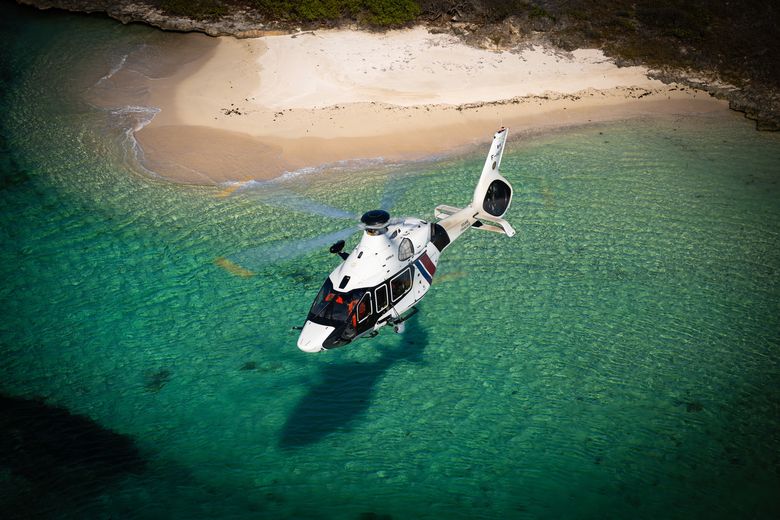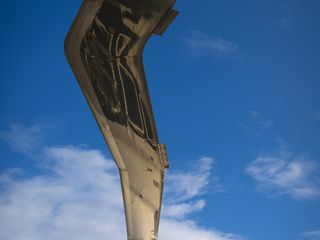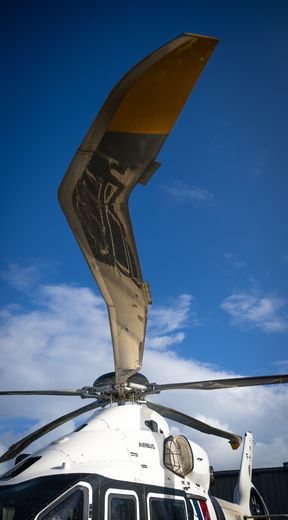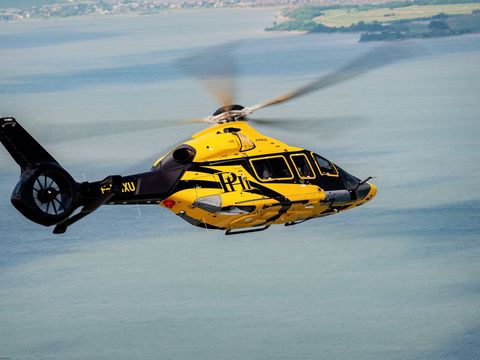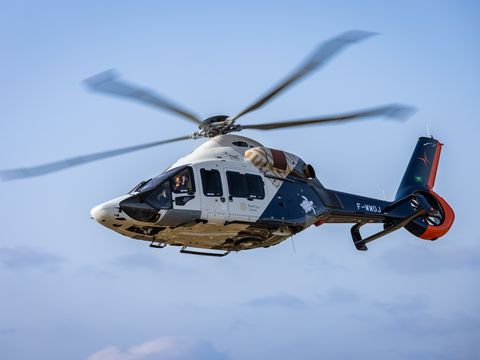A year into service, the Airbus H160 is already meeting expectations for the Douane Française (the French Customs agency). The helicopter’s technological advancements are enhancing its operational performance and safety—opening doors to new mission profiles.
Deployed to the French West Indies for just over a year, the Airbus H160 has significantly enhanced the Douane Française's operational reach across the Lesser Antilles arc, with the potential for future missions extending to French Guiana. This new helicopter's impressive autonomy allows for direct coverage of distant points like Saint Martin in the north and Grenada in the south, as well as sustained presence over key surveillance zones near the French islands. This extended range and endurance, demonstrated by flights exceeding three to three and a half hours, are unlocking new mission possibilities and bolstering the Douane's capacity to tackle illegal trafficking and ensure regulatory compliance throughout this extensive territory, often venturing significant distances offshore.
Avionics that pilots truly treasure
For the Douane’s Multi Regional Base Manager flying the H160 is beyond anything he had imagined: “It’s really an amazing helicopter.” The teams are effusive in their praise for the aircraft citing its improved operational performance and safety, which, according to them means that "you never find yourself in a difficult situation, thanks to the avionics." The teams also appreciate the enhanced safety offered through the helicopter’s ability to manage technical failures, stating "everything is done to relieve the pilot of a whole range of tasks when it comes to managing emergencies, the aircraft really adds value in terms of safety."

As one of the most modern helicopters available on the market, it’s not surprising that the H160’s performance offers a range of new operational options. As the H160 is larger than the Douane's other previous helicopter, it offers increased payload and carries more fuel. “This helicopter has the longest range currently available in the Lesser Antilles and its increased range and payload open up new operational possibilities,” confirms the Multi Regional Base Manager. He also highlights the huge advantage provided by the 4-axis autopilot: “it enables diverse missions like maritime rescues and stable hovering for winching.” Another gamechanging avionics feature is the H160’s computerised rotorcraft flight manual (c-RFM). As well as providing vital information such as weather conditions and required flight profile, it also further boosts performance by automising the crew’s calculation tasks, even allowing them to finish one mission and go straight to another in-flight—and with the H160’s enviable top speed, they can be on the scene quickly.

A maturity beyond its years
The modernity of the helicopter also facilitates easier maintenance, which translates to greater availability, which is particularly noteworthy, considering there were only two technicians supporting the helicopter daily (with more available during large inspections). In such a remote region this suggests an already impressive level of maturity for the H160 programme. Geoffrey, one of the technicians from Sabena technics who is responsible for the helicopter’s maintenance, feels that the efficiency of the helicopter’s maintenance process offers huge advantages. “The availability of this aircraft is really good because the maintenance has been streamlined, compared to other aircraft I've worked on. In the year or so that we’ve been working on it we haven’t had any major problems so I think that it’s performing like a really mature helicopter.”
The H160 promised a lot and is now delivering, a fact which is emphasised by the Multi Regional Base Manager, "we dreamed of having it and now it’s here. The H160 is a product that really meets our expectations in terms of what we hoped for as field operators."
*In accordance with the French Customs agency’s protocol the interviewees remain anonymous

Media gallery
Airbus H160 in action
